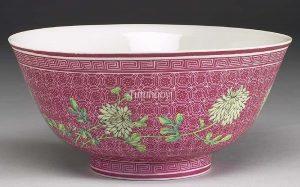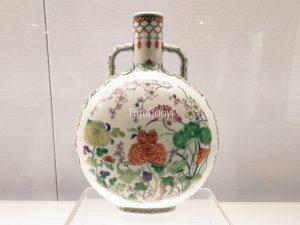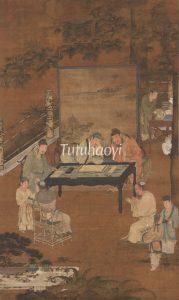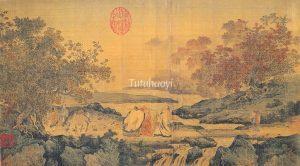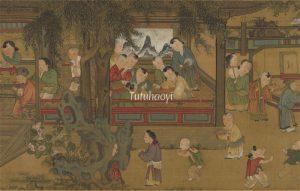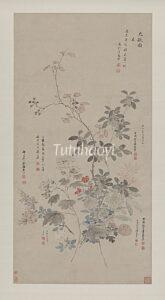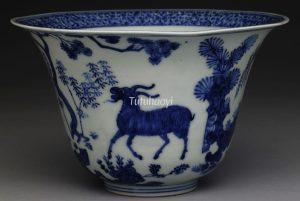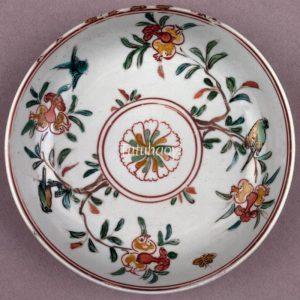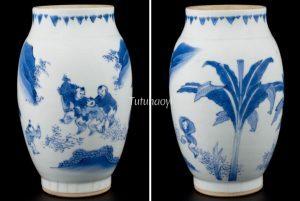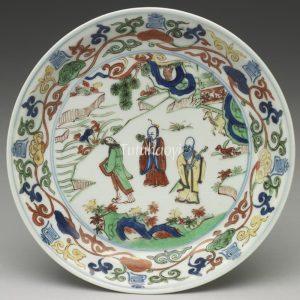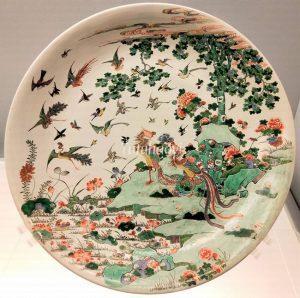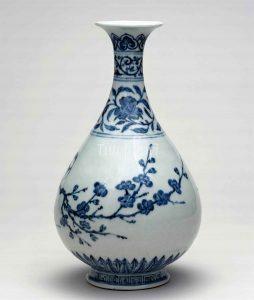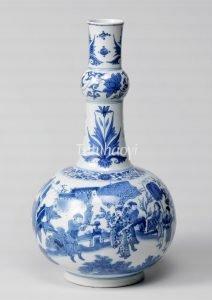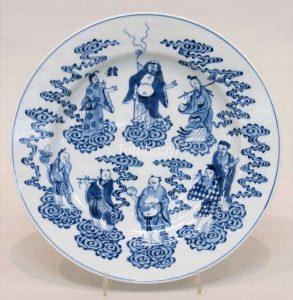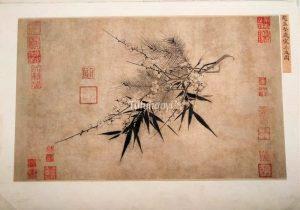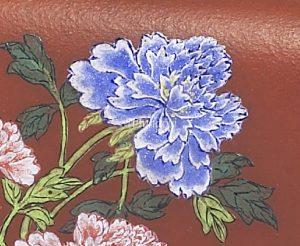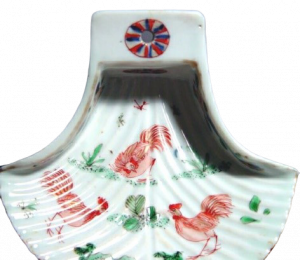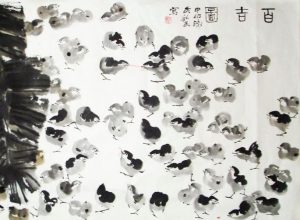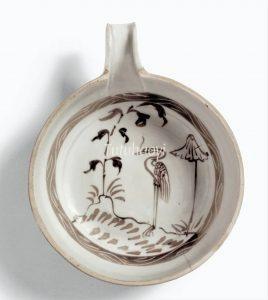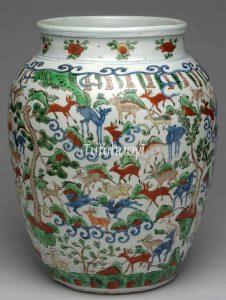Showing Results Containing
The ninth day of the ninth month is a special day in the Chinese lunisolar calendar. According to the Classic of Changes (易经 Yi Jing), ‘nine’ is a Yang number, and the ‘Double Ninth Day’ is considered auspicious and should be celebrated as a ‘Doub...
It is widely thought that the two-horned peony is a characteristic and unique feature only existed in Kangxi period. But Dr Yibin Ni has proved otherwise here with a number of examples from other reigns on Chinese antiques.
‘Eighteen Scholars’ was the name bestowed upon the circle of eminent men whom Li Shimin, later Emperor Taizong, drew to his side in the early Tang dynasty.
In the fourth year of Wude (621 CE), Prince Qin Li Shimin 李世民, ennobled as Grand General of Heavenly Strategy and permitted to appoint his own officers, founde...
The tale of Three men laughing by the Tiger Creek was already circulating during the Tang dynasty and gained widespread popularity in the Song dynasty.
According to legend, Huiyuan 慧远 (334–416), the abbot of Donglin Temple on Mount Lu, was known for never seeing his guests off beyond the bounds of Tiger C...
The Hundred Children motif (百子图) represents the most elaborate and auspicious extension of the broader Children at Play theme in traditional Chinese art. While both mot...
Children at Play is a classical motif in traditional Chinese art, portraying lively scenes of children engaged in games and daily amusements. These depictions often feature children flying kites, kicking balls, turning somersaults, enjoying lanterns, performing lion or dragon dances, tending flowers, pla...
The ‘Eight Horses’ (Ba Jun Tu 八骏图) is a classic motif in Chinese art, especially prominent in ancient paintings. Its origins are closely tied to the legendary journeys of King Mu of the Zhou Dynasty (周穆王), who reigned around the 10th century BCE. According to The Tale of King Mu (Mu Tianzi Zhuan 穆天子传), ...
The ‘Nine Autumn Flowers’ (Jiu Qiu Tu 九秋图) is a distinguished pattern in traditional Chinese decorative art, frequently employed to symbolise the richness and splendour of the autumn season. This theme features nine varieties of flowers, although not in a fixed set, collectively representing abundance, vitality,...
Pun Design :
Three + Goat
Punning Details:
– In an ancient Chinese literature, The Book of Change (I-Ching 易经) that can be traced back to Western Zhou (1046–771 BCE), there are sixty-four different hexagrams (gua
Pun Design :
Pomegranate
Punning Details:
– Artist may repeat one particular visual element many times for conveying the numeral ‘bai 百 hundred’.
– A cracked pomegranate showing numerous seeds (bai zi<...
Pun Design :
Five + Boy + Fighting over + Helmet
Punning Details:
– The action of five (more or fewer) boys fighting over something refers to ‘夺 duo’. ‘Five’ is a function word.
– ‘kui 盔 helmet’, ...
The figures of Three Star Gods are personified representation of Good Fortune, Prosperity, and
Phoenix has been deemed as a holy, noble and beautiful bird in the Chinese folk myths and was regarded as the king of all birds.
In Volume 915 of the comprehensi...
Image of the Five Principal Human Relations (Wu Lun Tu 五伦图), also known as Lun Xu Tu 伦叙图 (Epitome of Hierarchical Social Order), symbolises the five basic relationships in traditional Chinese society.
This design typically consists of five kinds of birds, the Continue Reading
The tree commonly referred to in English as the flowering plum in fact belongs to the species Prunus mume, which is part of the apricot family.
With the pine and bamboo, the plum ...
In this motif composition, the eight Daoist Immortals (ba xian 八仙) are not depicted in figural images, but rather are represented by their dist...
The main figure in the scene is a dignitary, often gripping a hu (笏) tablet in his hands, which an official uses to take notes when he has audience with the emperor in court. He is usually sheltered by page boys erecting some fans or a parasol or guarded by a soldier holding a weapon with an iron melon on the to...
A variation of 平升三级 ping sheng san ji (May you have three successive promotions unexpectedly) is 连升三级 lian sheng san ji. The design h...
Summer solstice, the longest day in the year, occurs in the fifth month of the Chinese calendar and Chinese astronomy believes that it stands for the apogee of the yang force in the annual cycle. Ancient philosophers warned in Classic of Changes (易经 Yi Jing) that ‘When the sun has reached the meridian h...
Either the clockwise swastika 卐 or the counterclockwise sauwastika 卍 is used interchangeably in Chinese decorative arts as well as in some religious contexts. Sometimes, the two opposite versions can co-occur on the same occasion without making a difference in meaning. Swastika is a very old symbol in the cultures scatte...
One day during Su Shi (苏轼, 1037-1101)’s exile in Huangzhou, Hubei province, his friend, Fo Yin (佛印, 1032-98) invited him and Huang Tingjian (黄庭坚, 1045-1105) to taste the ‘Peach-Blossom-Flavoured Vinegar’, made with a famous recipe inherited from the Tang dynasty (618-907). Su Shi, Huang Tingjian, and Fo Yin gathered arou...
Zhao Bian (赵抃, 1008–84) was held in high esteem all his life and posthumously because of his incorruptibility and sound statesmanship during his entire career. His prize possessions were legendarily well-known: a qin zither and two pets, a Continue Reading
Pines, bamboos, and plum blossoms (prunus) form the ‘Three Friends in Winter’ (岁寒三友) motif. The early blossoming plum is the harbinger of spring; the
The Eight Auspicious Emblems, also known as ‘ba bao’ (八宝, Eight Treasures), or ‘ba rui xiang’ (八瑞相, Eight Symbols of Good Fortune), are a set of symbols in traditional Tibetan Buddhism. These symbols are often depicted together, bringing positive energy, Continue Reading
Common sources such as Baidu refer to the motif of a peony flower head with two distinctive ‘horns’ as a characteristic feature unique to Chinese porcelain of the Kangxi ...
‘San gong 三公’ are the ‘Three Top Lords in the Imperial Court’. The ‘gong 公’ from the Chinese name ‘gong ji 公鸡’ for ‘rooster’ puns on the Chinese name for ‘lord’ and three roosters in the picture represent the three top lords, which are the three top positions in the imperial court. The Chinese ...
‘Shuang 双’ is the Chinese word for ‘two’. ‘Xiong 雄’ in ‘Xiong ji 雄鸡’ in the Chinese name for ‘rooster’ makes a pun on ‘xiong 雄’ for ‘hero’. Thus, the image of...
‘San gong 三公’ are the ‘Three Top Lords in the Imperial Court’. The ‘gong 公’ from the Chinese name ‘gong ji 公鸡’ for ‘rooster’ puns on the Chinese name for ‘lord’ and three roosters in the picture represent the three top lords, which are the three top positions in the imperial court.
...
‘Ji 鸡’ is a generic name for cockerel, hen, and chick, and sounds the same as ‘ji 吉’ for ‘good fortune’. Thus, a picture of many chickens is used to represent ‘abundant good fortune’.
Related Pun Pictures:
An egret and lotus flowers (莲花) are pictured in combination to infer ‘yi lu qing lian 一路清廉’, which means ‘You are an honest and uncorrupted official in ...
Just like the English word ‘bat’ can mean ‘a kind of animal’ in one context and ‘a club for playing tennis’ in another, so can pictures of animals and flowers in a pictorial design called ‘pun rebus’ in Chinese art. For example, the Chinese name for Continue Reading
